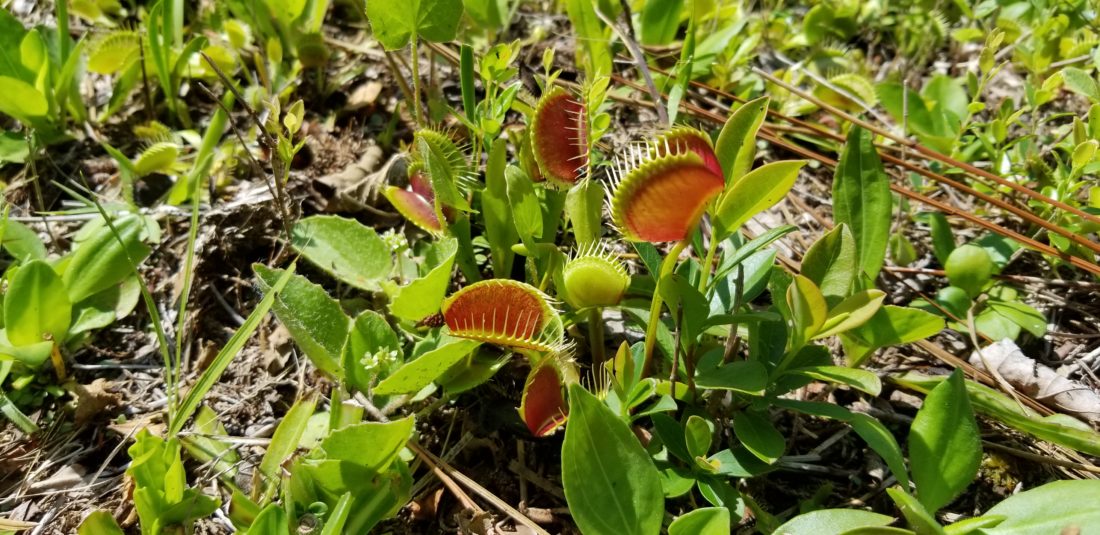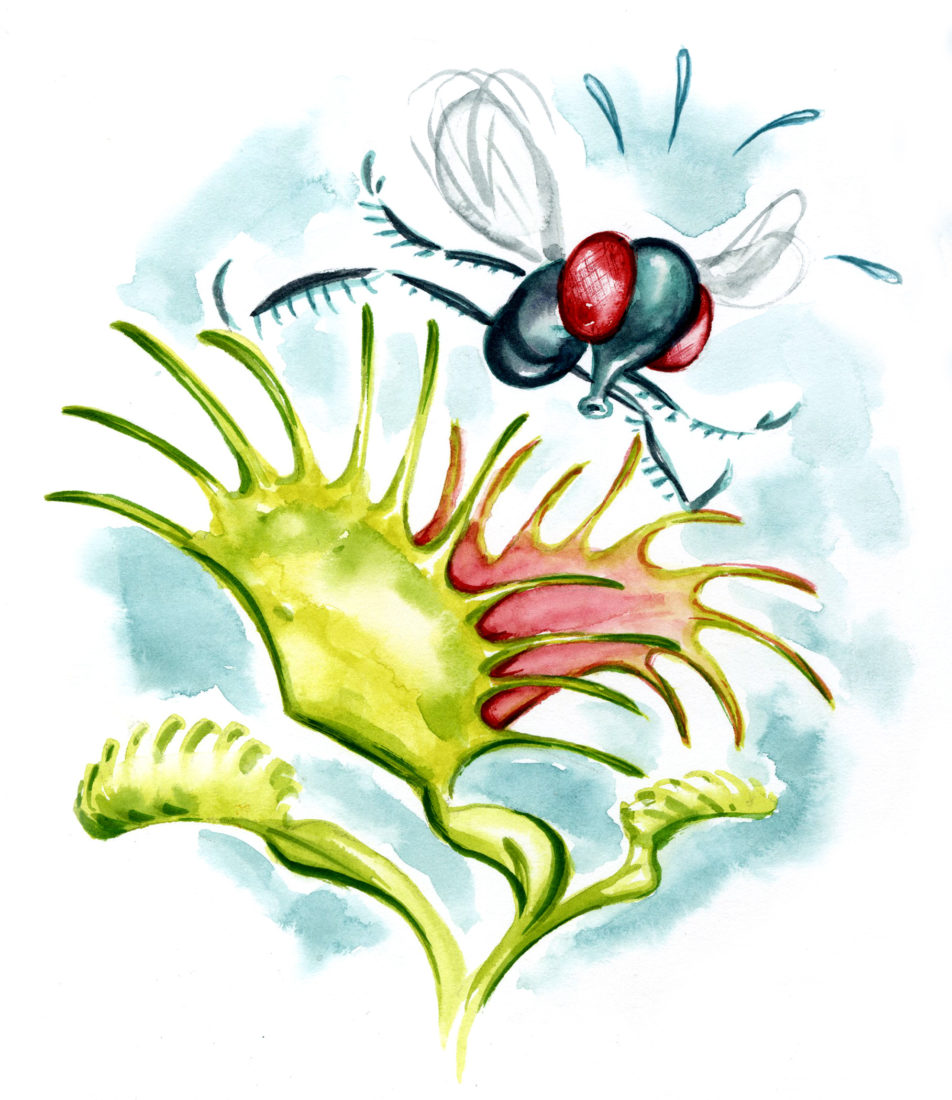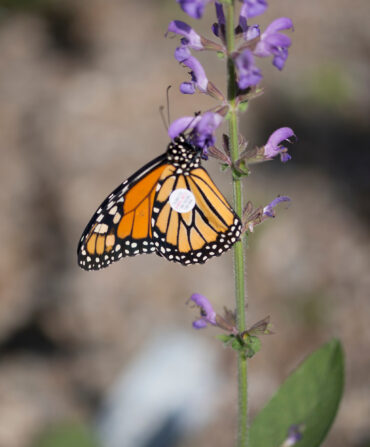“A Venus flytrap’s first true leaves are traps, and they come out snapping,” says Johnny Randall, the director of conservation at the North Carolina Botanical Garden in Chapel Hill. The teeny, opportunistic, photosynthesizing predator is just one of thirty-two species of carnivorous plants native to North Carolina, and it’s coming into bloom in May.
The acidic and nutrient-poor wet pine savanna habitat that Venus flytraps call home, in the southeastern portion of the state, makes a juicy ant, spider, or beetle a welcome dietary boost. Their mechanism is precise and deadly: Flytraps sport an enticing red interior, delicate trigger hairs, and tentacle-like “teeth,” so that when an insect moves across the trigger hairs, the trap snaps shut, seals, and releases enzymes to start the slow and gruesome process of days-long digestion.

“Watching a Venus flytrap is like watching natural selection and evolution in action,” says Randall, who works to conserve the increasingly rare plant in the face of habitat loss, poaching, and fire suppression, and collects its seeds for the garden’s seed bank. Flytraps bloom with clusters of white flowers, making the plants easier to spot on a springtime walk through the botanical garden, at Carolina Beach State Park in New Hanover County, or at Wilmington’s Stanley Rehder Carnivorous Plant Garden.








